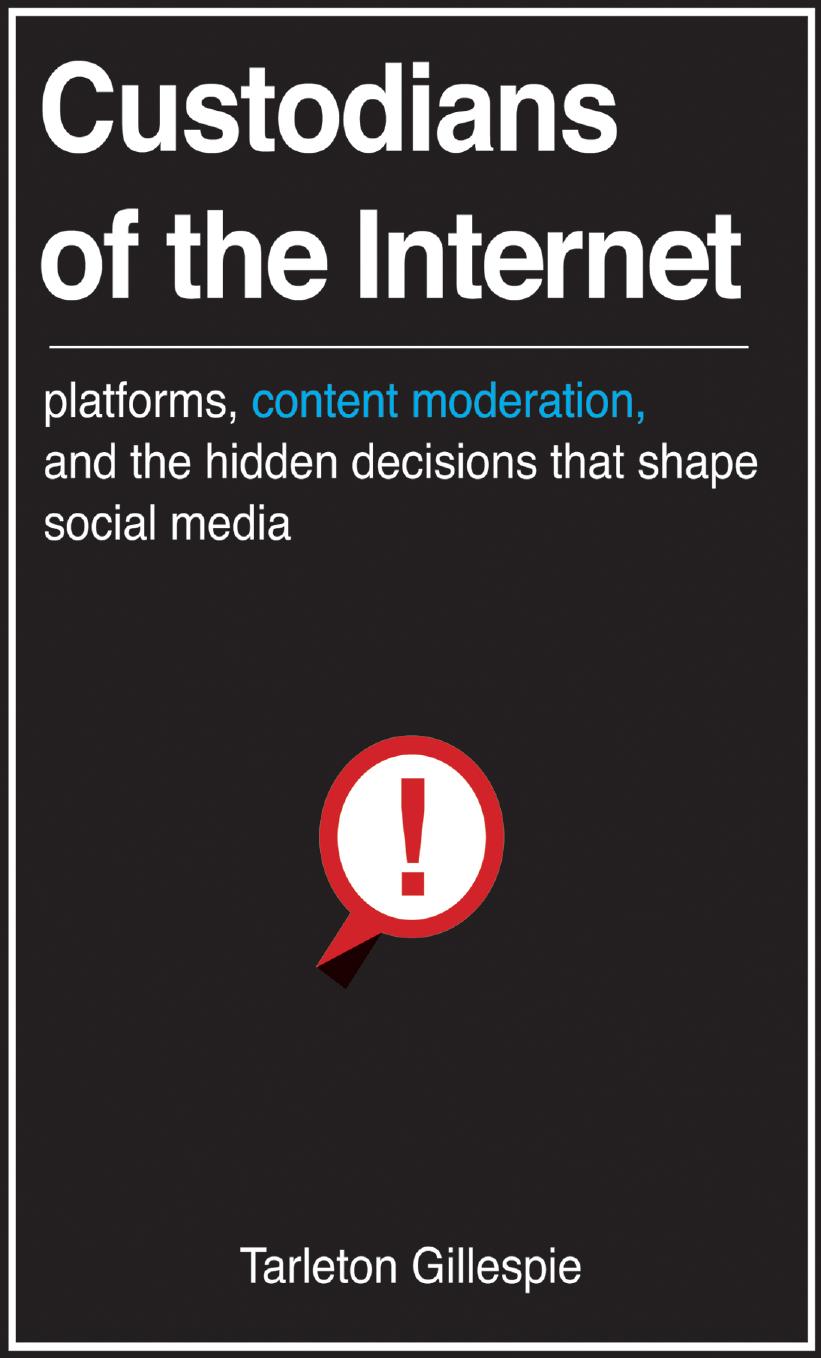Custodians of the Internet: Platforms, Content Moderation, and the Hidden Decisions That Shape Social Media by Tarleton Gillespie

Author:Tarleton Gillespie [Gillespie, Tarleton]
Language: eng
Format: epub, pdf
Tags: Business & Economics, Industries, Media & Communications, Computers, Web, Social Media, Political Science, Censorship, Social Science, Media Studies
ISBN: 9780300173130
Google: -RteDwAAQBAJ
Amazon: 030017313X
Publisher: Yale University Press
Published: 2018-01-15T00:37:25.385000+00:00
Karen Speed and her sons Quinn and Jesek; photo removed by Facebook July 2007. Used with permission of photographer and subject
In its earliest years, when Facebook was available exclusively to Ivy League college students, the site’s managers probably didn’t have to deal too often with photos of mothers breastfeeding their children. (It’s not clear, back then, if Facebook even had “managers” responsible for content rules and removals, though as early as 2008 it had a “site integrity ops” team, and by 2009 it was touting its moderation efforts in the press.)4 But when Facebook expanded its target membership in September 2006 from college students to anyone age thirteen or over, the influx of adults to the platform brought with it a much wider range of activities, well beyond the specific interests of well-to-do American undergraduates.
Less than a year later Facebook began removing breastfeeding photos and issuing suspensions to the users who posted them. Some of these photos were posted by new mothers to their personal profiles and shared with friends; others were posted to mothering or breastfeeding support groups on Facebook, where new mothers could get advice for the challenges involved in breastfeeding, and find some sense of communion and community with other mothers. A user would log on only to find an alert that her photo had been removed, or that she was suspended from the entire site for a specified number of days. The pro forma text from Facebook stated bluntly that her photo violated the rule against “nudity, drug use, or other obscene content”—a classification that was both vague and often insulting to these mothers.5
Facebook was not the first platform to run into trouble for restricting breastfeeding photos. In February 2007, a MySpace user found her breastfeeding photo removed and was threatened with account deletion if she posted it again. After the story generated some attention on a few interested “mommy blogs,” and in the local press where she lived, a petition demanding that MySpace change its policy received more than eleven thousand signatures.6 A year earlier, the blogging community LiveJournal experienced a full-blown “Nipplegate” when it clarified a rule banning nudity in “user pic” profile icons, and its volunteer abuse team requested the removal of one user’s profile pic because it featured her breastfeeding. The incident garnered a great deal of heated discussion within the LiveJournal community,7 and led to an email campaign, a one-day journal blackout, and even a (sparsely attended) “nurse-in” at the headquarters of parent company Six Apart, before an exception to the policy was made.8 Nevertheless, it was on Facebook that breastfeeding images would become a visibly contested line of demarcation, not just between acceptable and obscene, but between the rights of a platform and the rights of users.
It is hard to know now how many women had photos removed and said nothing; this is not information Facebook makes public or is eager to share. Some women who found their images removed may have simply accepted the decision as legitimate, or were unwilling to complain about it publicly.
Download
Custodians of the Internet: Platforms, Content Moderation, and the Hidden Decisions That Shape Social Media by Tarleton Gillespie.pdf
This site does not store any files on its server. We only index and link to content provided by other sites. Please contact the content providers to delete copyright contents if any and email us, we'll remove relevant links or contents immediately.
Cecilia; Or, Memoirs of an Heiress — Volume 1 by Fanny Burney(32434)
Cecilia; Or, Memoirs of an Heiress — Volume 2 by Fanny Burney(31869)
Cecilia; Or, Memoirs of an Heiress — Volume 3 by Fanny Burney(31852)
The Great Music City by Andrea Baker(31340)
We're Going to Need More Wine by Gabrielle Union(18967)
All the Missing Girls by Megan Miranda(15565)
Pimp by Iceberg Slim(14393)
Bombshells: Glamour Girls of a Lifetime by Sullivan Steve(13972)
Talking to Strangers by Malcolm Gladwell(13222)
Norse Mythology by Gaiman Neil(13204)
Fifty Shades Freed by E L James(13157)
For the Love of Europe by Rick Steves(12945)
Mindhunter: Inside the FBI's Elite Serial Crime Unit by John E. Douglas & Mark Olshaker(9200)
Crazy Rich Asians by Kevin Kwan(9167)
The Lost Art of Listening by Michael P. Nichols(7406)
Enlightenment Now: The Case for Reason, Science, Humanism, and Progress by Steven Pinker(7228)
The Four Agreements by Don Miguel Ruiz(6630)
Bad Blood by John Carreyrou(6552)
Weapons of Math Destruction by Cathy O'Neil(6142)
